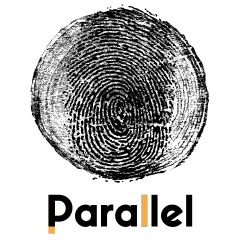Embrace the Essence: A Guide to Understanding and Applying Form Follows Function
The words “Form Follows Function” resonate deeply with anyone captivated by design. Coined by architect Louis Sullivan, this principle transcends style and trends, offering a fundamental approach to creating meaningful and enduring designs. But what does it truly mean, and how can you apply it in your own creative endeavors?
Understanding the Core:
At its heart, “Form Follows Function” challenges the notion of aesthetics being an arbitrary layer draped over practicality. Instead, it advocates for design that organically emerges from understanding and fulfilling a specific purpose. Imagine a chair: its form – the shape of the seat, the angle of the backrest – should directly respond to the function of providing comfortable support for human posture.
Key Pillars of Application:
- Start with Purpose: Every design journey begins with a clear understanding of what the object is meant to achieve. Whether it’s a lamp illuminating a workspace or a shoe protecting your feet, identify the function and let it guide your decisions.
- Materiality Matters: Choose materials that not only suit the aesthetics but also enhance the function. A strong, weather-resistant material for outdoor furniture or a soft, breathable fabric for clothing are examples of form and function working in tandem.
- Embrace Simplicity: Avoid unnecessary embellishments or complex structures that hinder functionality. Clean lines, intuitive design, and thoughtful detailing contribute to a sense of elegance and efficiency.
- Prioritize the User: Consider the needs and interactions of the person who will use your design. How will they engage with it? What challenges might they face? Designing with empathy ensures a user-centric approach that prioritizes function.
- Honesty in Expression: Let the function dictate the aesthetic outcome. Don’t force a specific style onto an object; allow its purpose to naturally express itself in its form. This genuineness creates objects that are both beautiful and authentic.
Beyond the Obvious:
“Form Follows Function” is not just about chairs and buildings. It’s a way of thinking that can be applied to various creative disciplines:
- Graphic design: Layouts that guide the eye efficiently, typography that enhances readability, and visuals that communicate information clearly are all examples of this principle in action.
- Product design: Tools that fit comfortably in the hand, interfaces that are intuitive to use, and features that solve real problems all demonstrate the successful integration of form and function.
- Fashion design: Clothing that allows freedom of movement, fabrics that respond to weather conditions, and cuts that flatter the body demonstrate how fashion can embrace this principle without compromising style.
Remember:
- “Form Follows Function” is not a rigid rule, but a guide for thoughtful design. Experimentation and iteration are crucial to finding the right balance between function and aesthetics.
- Don’t be afraid to challenge conventions and explore innovative solutions. This principle doesn’t imply sacrificing beauty; it encourages an organic relationship between function and aesthetics that leads to unique and meaningful designs.
- By constantly questioning how form can best serve function, you’ll create objects that not only perform well but also enrich the lives of users and elevate the world around you.
Embrace the essence of “Form Follows Function,” and embark on a creative journey where practicality and beauty dance in perfect harmony. By prioritizing function and allowing it to guide your design decisions, you’ll create objects that are not just visually appealing, but also meaningful, useful, and enduring.
